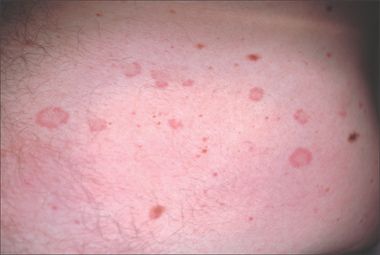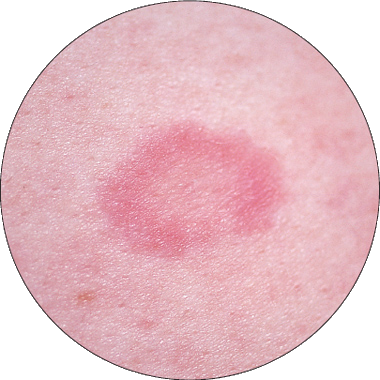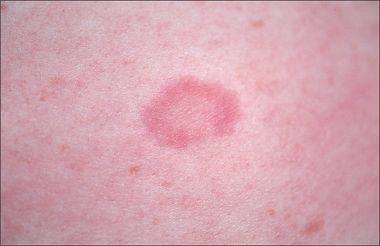- Clinical Technology
- Adult Immunization
- Hepatology
- Pediatric Immunization
- Screening
- Psychiatry
- Allergy
- Women's Health
- Cardiology
- Pediatrics
- Dermatology
- Endocrinology
- Pain Management
- Gastroenterology
- Infectious Disease
- Obesity Medicine
- Rheumatology
- Nephrology
- Neurology
- Pulmonology
Why has this annular rash resisted antifungals?
A 45-year-old man presents with a 4- to 5-year history of an intermittent, asymptomatic, red, circular rash on his trunk. Trials of antifungal creams have not been successful. The patient is otherwise healthy and takes no medications.

Case:
A 45-year-old man presents with a 4- to 5-year history of an intermittent, asymptomatic, red, circular rash on his trunk. Trials of antifungal creams have not been successful. The patient is otherwise healthy and takes no medications.

Answers on Next Page
Case: Erythema annulare centrifugum

A skin biopsy, I, confirmed the suspected diagnosis of erythema annulare centrifugum, E. This annular eruption is a reaction to a variety of antigenic stimuli, including infectious, inflammatory, and neoplastic processes. The cause of this patient's disease remains unknown. The lesions usually respond to topical corticosteroids.
Subacute cutaneous lupus is also a gyrate eruption, but it usually is found on sun-exposed surfaces. Pityriasis rosea typically is itchy and self-limited, lasting weeks to months. Erythema chronicum migrans often is associated with Lyme disease, is self-limited, and presents with slowly enlarging singular or multiple annular lesions. Tinea corporis does not disappear and reappear.
Atopic Dermatitis: The Pipeline and Clinical Approaches That Could Transform the Standard of Care
September 24th 2025Patient Care tapped the rich trove of research and expert perspectives from the Revolutionizing Atopic Dermatitis 2025 conference to create a snapshot of the AD care of the future.
